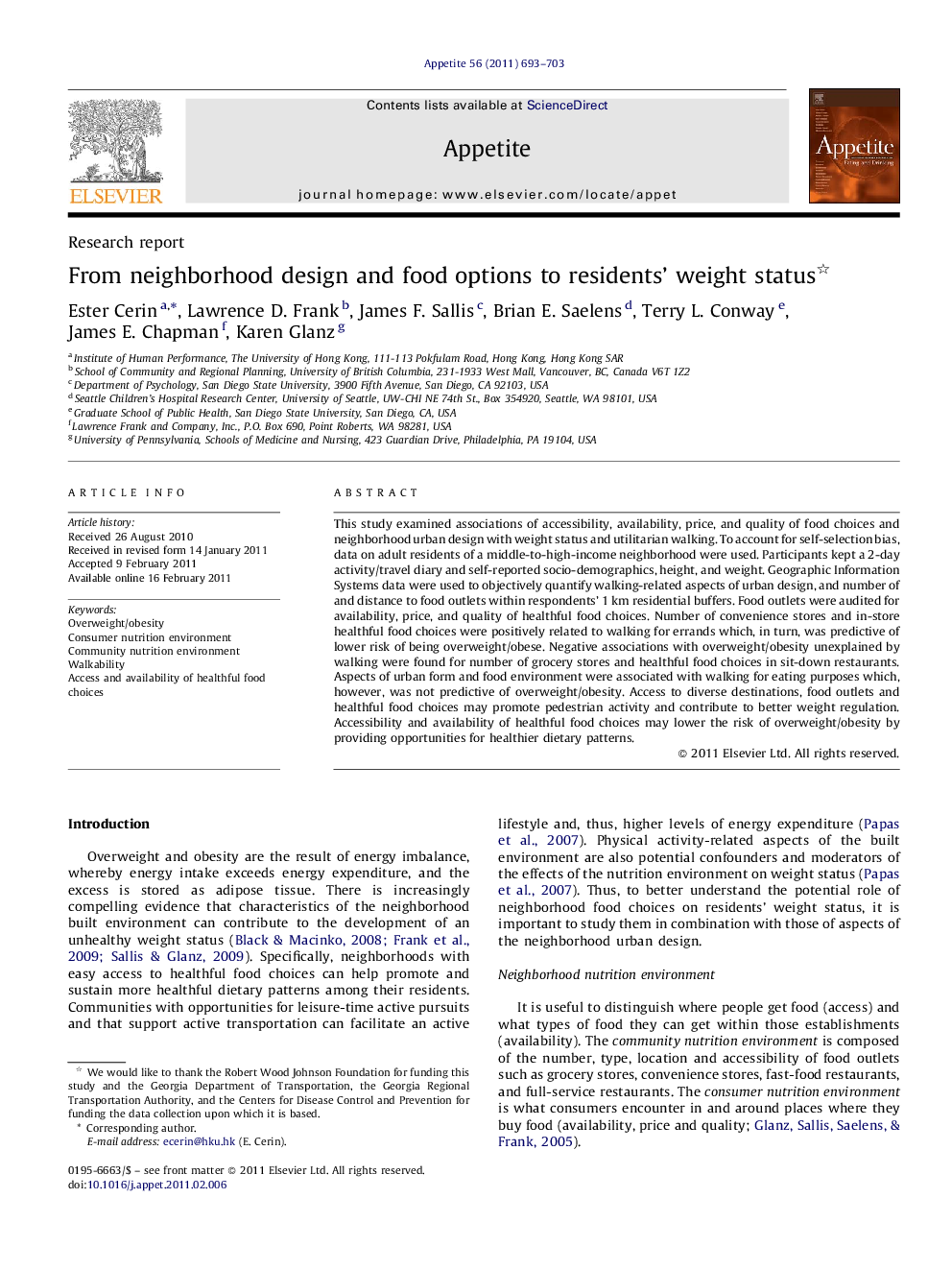| کد مقاله | کد نشریه | سال انتشار | مقاله انگلیسی | نسخه تمام متن |
|---|---|---|---|---|
| 940568 | 924892 | 2011 | 11 صفحه PDF | دانلود رایگان |

This study examined associations of accessibility, availability, price, and quality of food choices and neighborhood urban design with weight status and utilitarian walking. To account for self-selection bias, data on adult residents of a middle-to-high-income neighborhood were used. Participants kept a 2-day activity/travel diary and self-reported socio-demographics, height, and weight. Geographic Information Systems data were used to objectively quantify walking-related aspects of urban design, and number of and distance to food outlets within respondents’ 1 km residential buffers. Food outlets were audited for availability, price, and quality of healthful food choices. Number of convenience stores and in-store healthful food choices were positively related to walking for errands which, in turn, was predictive of lower risk of being overweight/obese. Negative associations with overweight/obesity unexplained by walking were found for number of grocery stores and healthful food choices in sit-down restaurants. Aspects of urban form and food environment were associated with walking for eating purposes which, however, was not predictive of overweight/obesity. Access to diverse destinations, food outlets and healthful food choices may promote pedestrian activity and contribute to better weight regulation. Accessibility and availability of healthful food choices may lower the risk of overweight/obesity by providing opportunities for healthier dietary patterns.
Research highlights
► Studied relations of local walking and food environments with overweight and walking.
► Convenience stores and in-store healthy foods were related to walking for errands.
► Land use and food environment were related to walking for eating purposes.
► Walking for errands, but not walking for eating purposes, was related to overweight.
► Grocery stores and healthy foods in restaurants predicted lower risk of overweight.
Journal: Appetite - Volume 56, Issue 3, June 2011, Pages 693–703